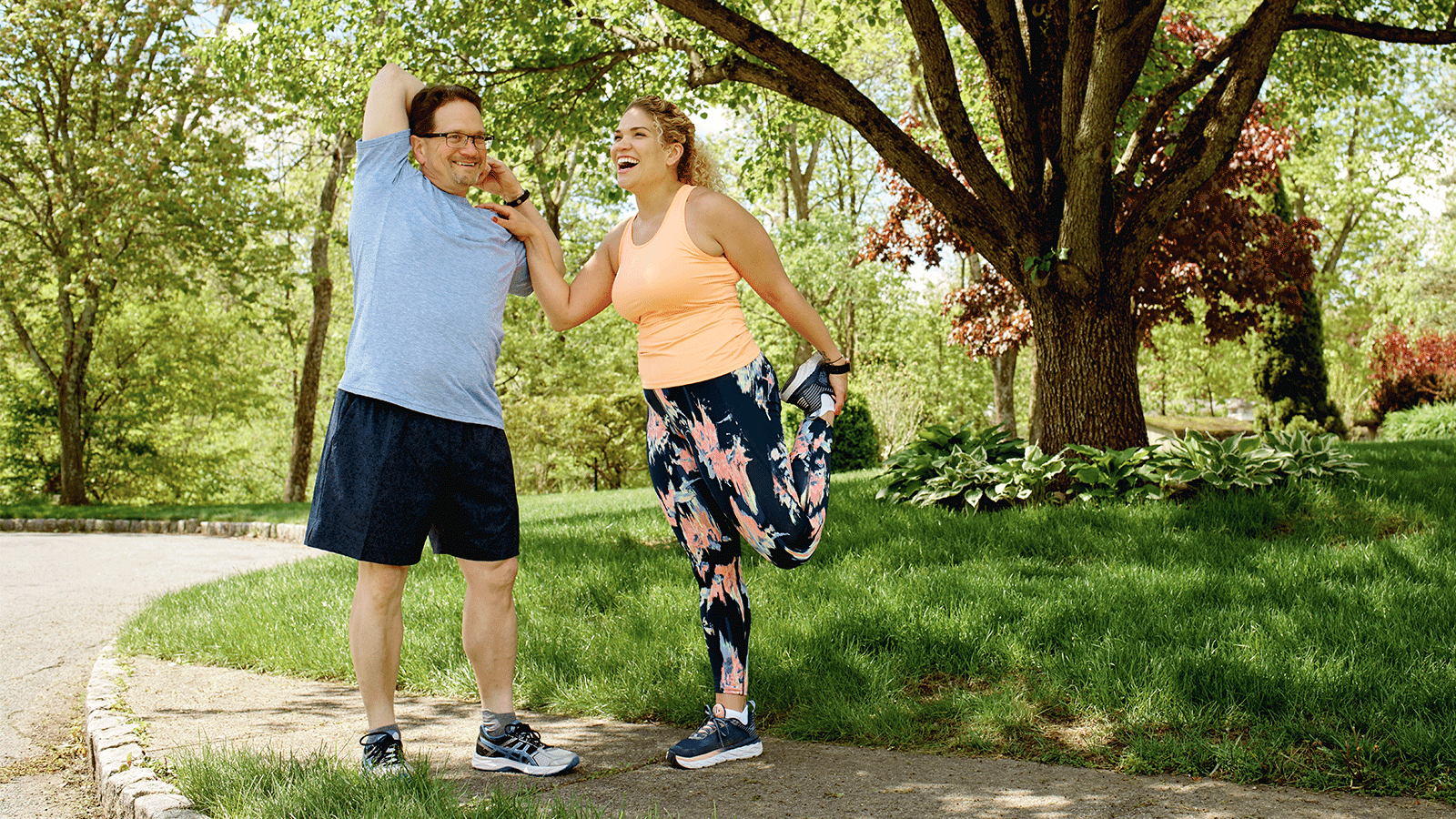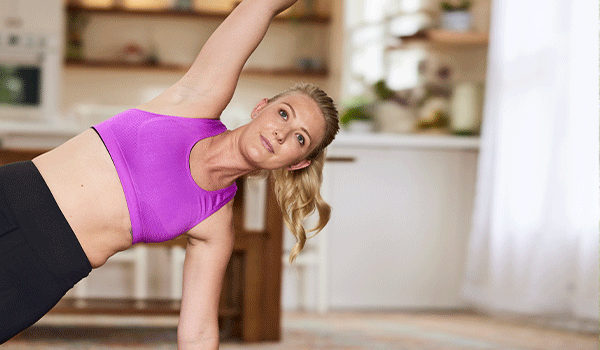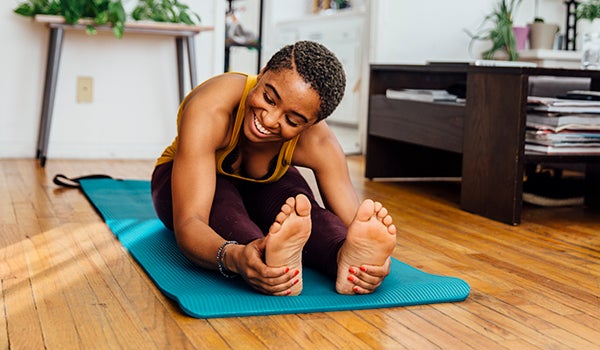20 ways to sneak more movement into your day


Struggling to squeeze that 60-minute yoga class into your day? Don’t sweat it. (Literally.) Our daily routines are rife with opportunities to get active, and every bit has benefits, explains Christi Smith, MS, a certified strength and conditioning specialist. In fact, research shows that something as simple as walking for two minutes after 20 minutes of sitting can improve resting blood pressure. To help you get more action from your everyday activities, we turned to the fitness pros. Here, their top tips for making moves.

At home
Take a commercial ad break
OK, so you've had a long day at work, cooked dinner…and now you've got a date with The Bachelor. (Woo-hoo!) During each break—or during closing credits if you’re streaming—try doing a set of lunges, squats, sit-ups, or arm circles until your show returns.
RELATED: Ad-break workout
Make an extra trip
Hauling all the groceries inside in one go or lugging an overstuffed hamper of dirty clothes to the washing machine in a single attempt feels great. But you know what feels even better? Breaking it up into multiple trips so you can boost your daily step count.
Save that episode
Calling all podcast fans: Instead of listening to one on your commute or during your downtime, schedule a walk or a jog around the block whenever a new episode drops. The secret here: temptation bundling. Pairing an activity you don’t enjoy as much (say, long walks or running) with something you do enjoy (like your favourite true crime podcast) can help motivate you to do the less loved activity more often, according to Smith.
Brush and squeeze
Work on your dental and physical health at the same time by using the two minutes that you spend brushing your teeth to squeeze your tush. Hold for one count and repeat. You can also switch things up with wall sits or squats.
Squat and sort
Cluttered floor or messy playroom? Turn cleanup into time for leg and butt work. Add a few squats as you bend to put away clothes, shoes, toys, and everything else that isn't where it should be.
Get into gardening
A full-body workout with a side of fresh veggies? Yes, please! While they may not seem like the most intensive activity, gardening tasks—like raking, digging, and weeding—can work a range of muscle groups. If you don’t have a backyard, clear a bit of outdoor space on your balcony, deck, or windowsill to start a container garden or look for a local community garden in your neighbourhood.
Skip appliances and DIY
In the kitchen, instead of using a food processor or buying precut produce, chop fresh vegetables by hand. And keep your electric mixer tucked away so you mix ingredients with a spoon and some elbow grease.

On the go
Be a good sport
If your kids play sports, you’ve likely spent hours sitting on the sidelines while they practice. Next time, transform the waiting game into a workout. Walk around the field or car park (Walking is one of the most beneficial forms of low-impact exercise.) Or try this simple interval exercise to mix things up: Find some space—it could be from one end of the field to the other or even from one parking spot to the next—and see how fast you can walk it. Slowly walk back to your starting point to recover and then repeat.
Pick a farther parking spot
Resist the urge to grab whatever parking spot is closest to the shops. Instead, parking as far away as you can comfortably walk is a great way to add extra steps to your day, Smith says.
Go on a supermarket scavenger hunt
Instead of taking your usual route around the shops, organise your grocery list so you have to go a bit out of your way to get everything. Almond milk might be one case over from the eggs, but separate the two on your list so you have to grab frozen veggies in between, then come back to the dairy section.
Stick with the stairs
It’s a classic, but effective, piece of advice: Whenever you can, take the stairs. Stair-climbing is a low-impact way to raise your heart rate and strengthen muscles. And you don’t have to log hours on the stair climber to reap the benefits: A 2021 study found that after eight weeks, women who climbed stairs at home experienced a similar reduction in heart disease risk factors as did those who exercised at the gym. You can also start small by walking up or down the escalator as it moves. Have some extra time? Try this five-minute stair workout.

At the office (even if it’s a home office)
Sneak in a below-the-desk workout
If you work at a desk job, it might not surprise you that the average spends nearly eight to 13 hours sitting every day. Break up any long bouts whenever you can; sitting less is linked to a whole host of health benefits—including reduced risks of heart disease and type 2 diabetes. Get up to refill your water bottle, say hi to a colleague, or grab a snack.
If you can’t get up and move around, even small movements, like foot circles, can help get your circulation pumping: Sit up straight and squeeze in your stomach as you lift up on your toes to tighten your calves. (This can also help with posture!) Work the calf muscles further by stretching your leg and pointing your toes forward and backward 20 times, then make circles with your foot 20 times. Repeat with the other leg.
Find excuses to stand
While standing may not feel like movement, research shows it can actually activate your whole body. Some ideas to get you out of your seat: Take phone calls standing up; keep your most used files in an overhead compartment so you need to stand to reach them; or get a sit-stand desk and use it in standing mode whenever you reply to emails.
Schedule a moving meeting
Take stock of your upcoming calendar invites and see if you can take any meetings on the go. (Stash a pair of sneakers under your desk or in your car for those spontaneous moments.) If you work from home, call in from your mobile phone while walking around your neighbourhood.
Switch off your camera to stretch
Some days you might not be able to take a walking meeting or do laps around the block and that’s OK, Smith says. If you can’t leave your desk, consider deeming one or two meetings audio-only to get in some desk stretches while you listen.

On holidays
Ditch the car
Turn an ice cream excursion into an after-dinner stroll. Bike to pick up groceries and snacks. Walk to a nearby playground with your children for an afternoon of fun—push them on the swings, do pull-ups on the bars, or play a game of tag. (And, no, you’re not too grown up to go down the slide.)
Dive into water sports
The possibilities for aquatic exercise during a beach trip are nearly limitless: swimming, bodysurfing, boogie-boarding, surfing, windsurfing, kayaking, snorkeling, and waist-deep water walking. And don’t let the fun factor fool you—water movement is a great way to get active. It’s suitable for all ages, easy on the joints, and uses natural resistance to help strengthen muscles.
Play in the sand
Prefer to stay dry? Grab some buckets and shovels and work your arms building a large sand castle or sculpture. You can also make friends with your beach-blanket neighbours and organise a friendly game of volleyball.
See the city sights on foot
Headed to the city for a weekend? Schedule a walking tour, plan a day exploring a museum, or pick a new-to-you area and wander around to find hidden gems. And whenever you can, opt for public transportation over cabs or car services—it’s not only better for your body and your bottom line, but also it’s often a quicker way to get around.